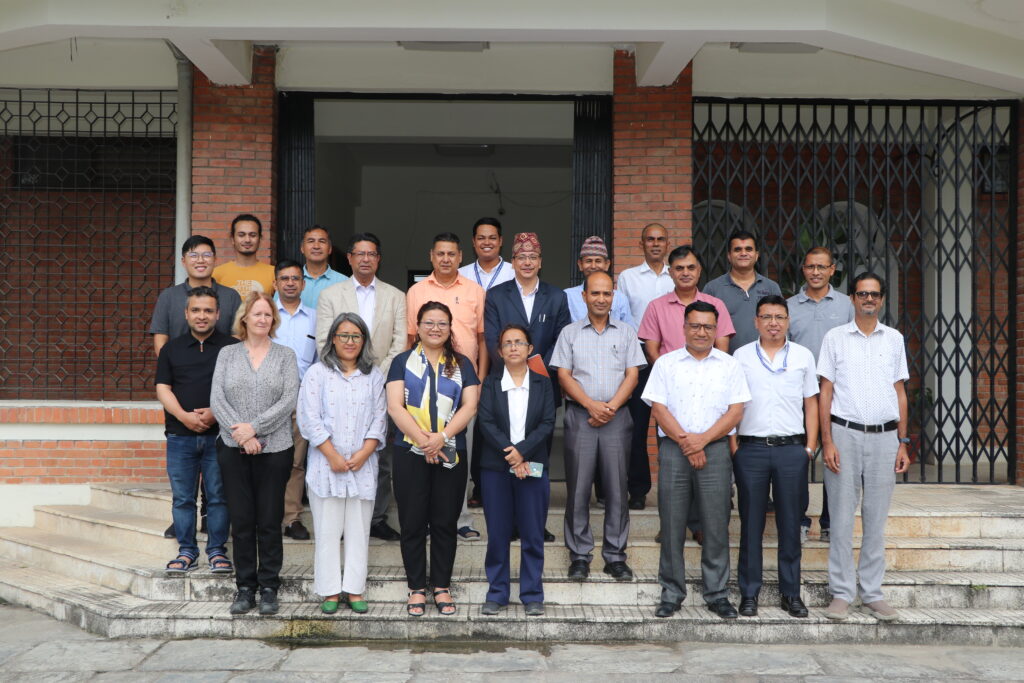Advancing Cryosphere Research: Nepal’s Coordinated Endeavor
28 August, 2023
The commitment to cryosphere research and monitoring reached a new level during the Nepal Cryosphere Monitoring and Research Co-ordination Meeting held on August 28th August 2023 at the Central Department of Hydrology and Meteorology (CDHM), Tribhuvan University, Kirtipur, Kathmandu, Nepal. This pivotal event jointly organized by CDHM and the International Center for Integrated Mountain Development (ICIMOD), marks a significant step in the pursuit of understanding and addressing the challenges of changing cryosphere in the region.
Commencing the opening session, Head of the department, Prof. Dr. Deepak Aryal highlighted the objectives of the gathering and delivered insights from the previous curriculum development session. It was then followed by a warm welcome from Dr. Jagadishwor Karmacharya, the newly appointed Director General of the Department of Hydrology and Meteorology (DHM), who emphasized DHM’s role as the responsible government body. Dr. Arun Bhakta Shrestha, from ICIMOD stressed the importance of regional collaboration and introduced ICIMOD’s strategic initiatives, emphasizing a greener, more resilient Hindu Kush Himalaya region.
The first session explored cryosphere mapping activities and stakeholders, revealing significant insights from CDHM’s efforts in glacier monitoring and network expansion, DHM’s plan to automate stations and enhance monitoring, Kathmandu University’s past and current cryosphere projects, NAST’s ongoing cryosphere and high-altitude endeavors and ICIMOD’s cryosphere initiatives and strategy to inspire collaborative efforts.
Moderated by Dr. Miriam Jackson, the group discussions explored topics on developing a regional cryosphere strategy, prioritization of cryosphere aspects and the potential contribution of CryoHub to the strategy. Expansion and continuation of current monitoring networks, field parameter standardization, capacity building in low flow, modeling and remote sensing and collaborative efforts were highlighted in the regional strategy section. Prioritization of the cryosphere aspects based on regional significance, focus on snow and contrast and emphasis on chemical parameters, phase change, cryosphere emission, permafrost relationship to regional hydrology and hazards and application of precipitation isotopes were major points in the second section. The association of CryoHub for translation of science, knowledge generation, strategy formulation and implementation, awareness, partnerships, citizen science interaction/connectivity and linking with community feedback mechanism were key highlights of the third section.
The meeting concluded with action points, including regular meetings with simple sharing mechanisms and formulation of a coordination committee, with representatives from each participating institution chaired by CDHM’s head.
Dr. Arun Bhakta Shrestha and Prof. Dr. Deepak Aryal delivered the closing remarks, resonating with the significance of collaborative efforts. The Nepal Cryosphere Monitoring and Research Co-ordination Meeting successfully paved the way for synchronized research, promising a holistic approach to addressing the challenges of a changing cryosphere for the region.

